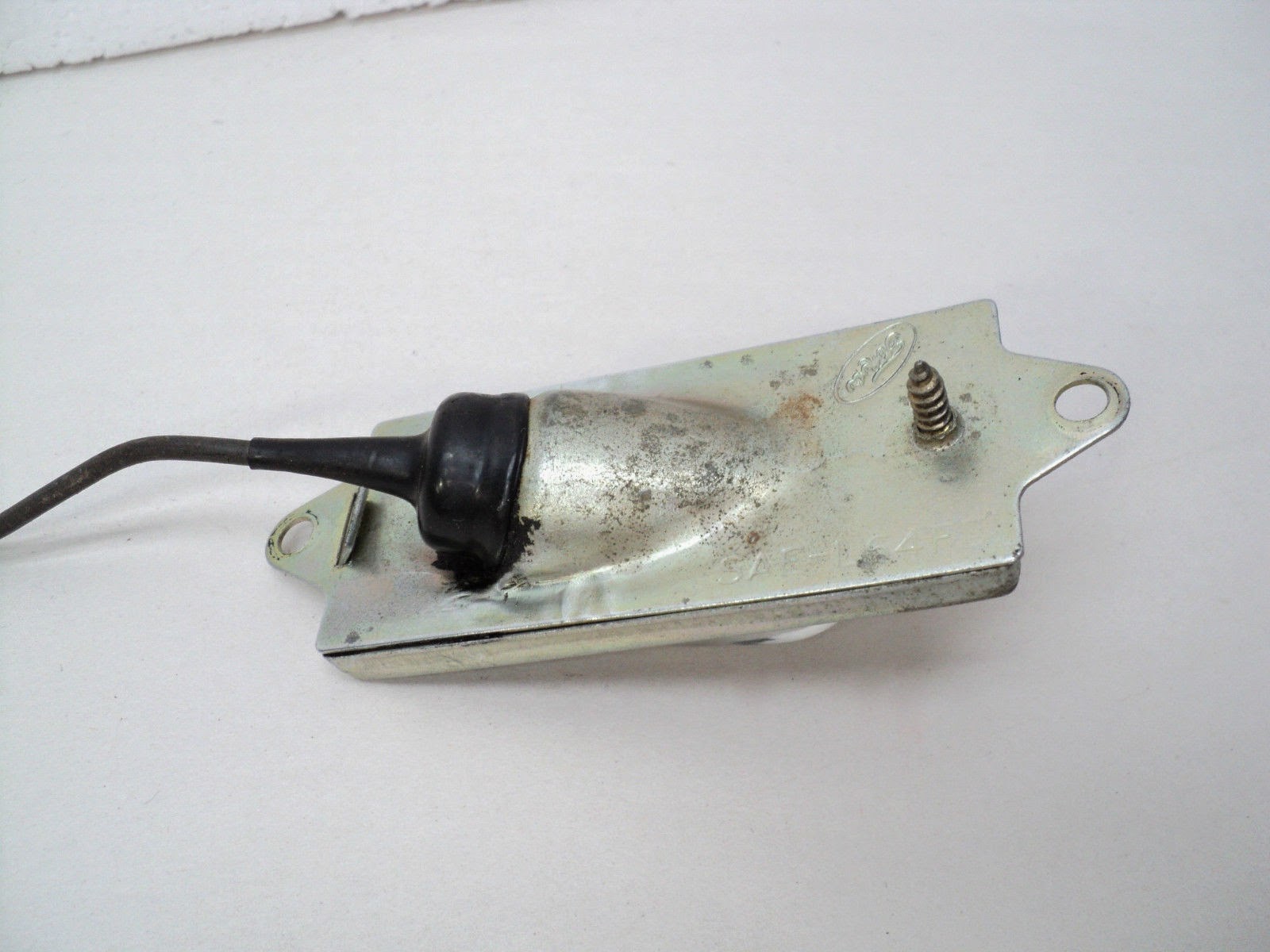I started by taking a close look at the housing as in order to get to the bulb I would have to disassemble it. There was a single small screw to lift up the top of the frame and the heavily painted bulb cover. I could not get the screw loose as it was rusted and when I looked to take the complete housing off the bumper to make disassembly a little easier I saw that the two small bolts and nuts were also heavily rusted. I shot all 3 with WD-40 and let sit over night.
 |
| The light behind protective bar |
A quick search through the FORD F-250 Manuals showed me the part number was "C3AZ-13550-1157" and that this part was identified as a alternate for the round button shaped license plate lights used on trucks sold with rear bumpers and identified as the correct light for 'bumperless' trucks.
 |
| Original Lamp Housing |
We know Old Blue has an aftermarket bumper as FORD did not offer a step bumper in 1966, so the part looked correct. Searching on EBAY I found a used one for $29.99 + $19.55 shipping (WOW!) that would be $50.00 for a replacement!
 |
| From http://www.fordification.com/. |
I decided to search on the part number number and found that 65 Mustangs, Rancheros, Falcons all had used the same housing but with a substantially shorter cable. I found one on EBAY for about $18 with shipping. I guess I could use this for Old Blue with a few modifications but decided I would try to salvage the rusted, painted one currently on the old truck.
Rollling under the back bumper I put a socket wrench on the old nuts holding the light housing to the back bumper and gave it a good twist .... the bolt snapped in half just behind the nut ,,,hmmm .. that worked out O.K. will the other do the same? I tried the second bolt and yep, it also snapped in half right behind the nut. I grabbed a punch and a hammer and gave the remainder of the bolt a soft whack and it pushed through the bumper and the housing and dropped the ground near my legs, the same for the other bolt and after 50 years the light housing was loose from the bumper. I firmly grabbed the housing and using the largest screw driver I had I carefully unscrewed the single screw holding the glass bracket to the housing. As the screw backed out the glass bulb cover fell into my hands along with the remainder of the bulb. The bulb was almost nonexisitent having fallen to bits over the years. I laid the glass shade aside and dropped the glass bracket into a jar of Phosphoric Acid for an overnight soak. I took a closer look at the bulb and noticed it was labeled with 83, so later that night I took a ride over to the local Autozone, O'reilly's and Napa stores. None of these stores had type 83 bulbs so I wondered if this was the right bulb for the 12v system on Old Blue or had this been a just in time replacement ?
While sitting in the parking lot of the Napa store I googled for the part number 13550 and found a conversion table at the fordification.com website. Here I found the recommendation to use Industry number bulb 97 which replaced the FORD part no. C3AZ-13466-G. I went inside and bought 2 type 97's for about $5.
Having pulled the glass holding bracket and glass bulb cover I took a closer look at the light fixture. It had a single cable coming from somewhere behind the bumper that ran through a waterproof plastic holder, through the metal mounting clip through another plastic washer terminating with a brass cover. The parts were all rusted and covered in dirt.
 |
| Back plate with power feed |
 |
| Back plate with bulb removed |
 |
| New Gasket |
 |
| Ready for Re-Assembly |
After shutting down the engine and turning off the lights I rolled under the back bumper and followed the wire from the light assembly back to the connector plug into the wiring harness just as the wiring diagram had indicated. The cable had been extended so the bumper could be moved out under the old camper that Uncle Ken used to have. The wiring looked fine with no breaks so I pulled the harness connector plug and sanded the connector shiny, and reinserted it.






















